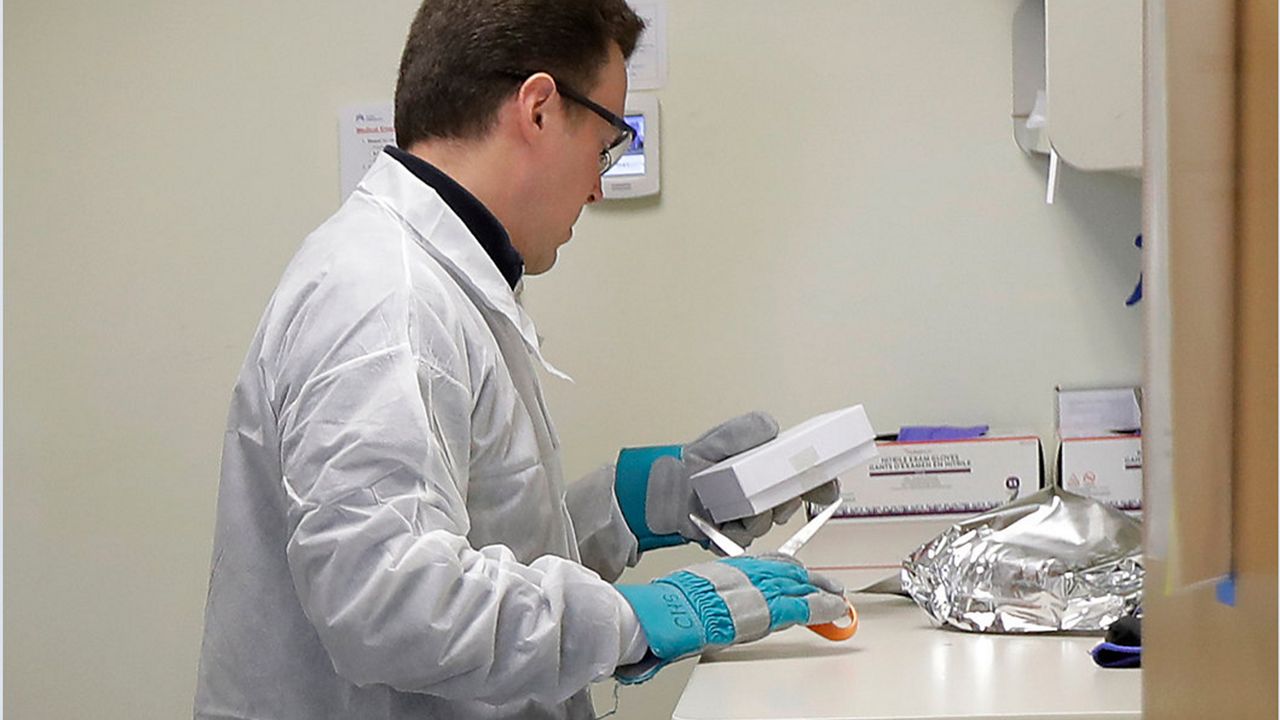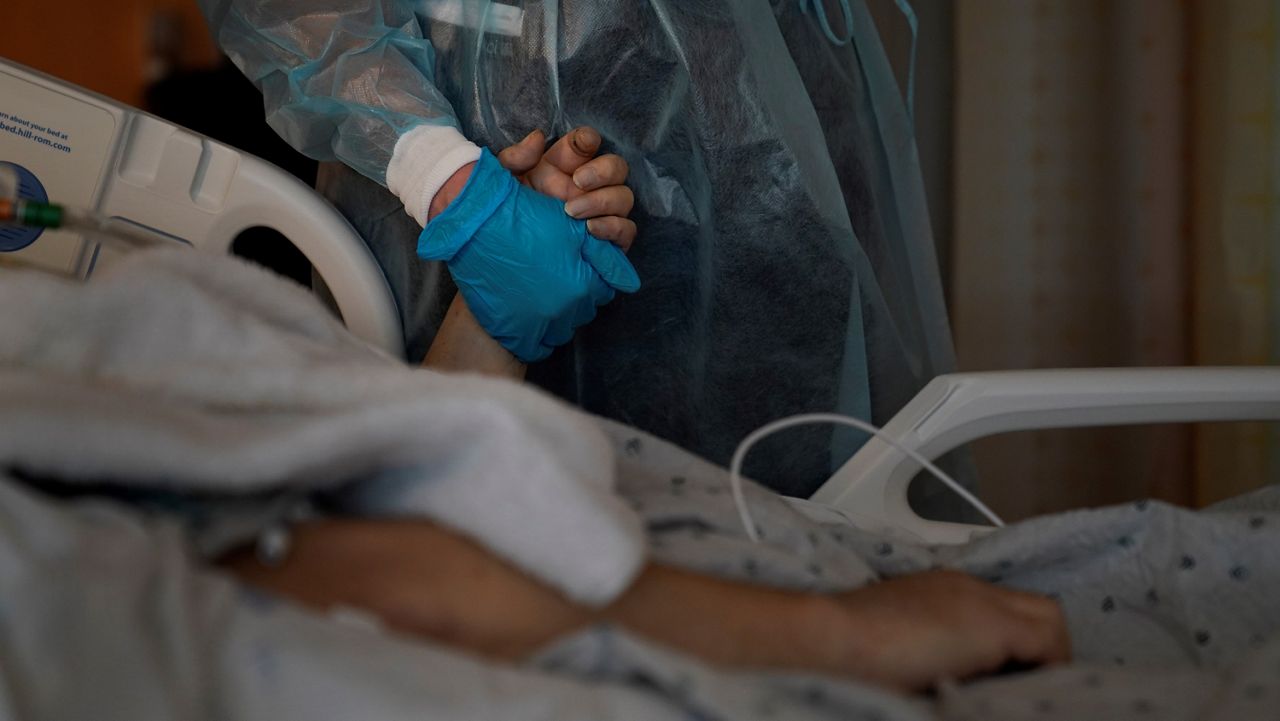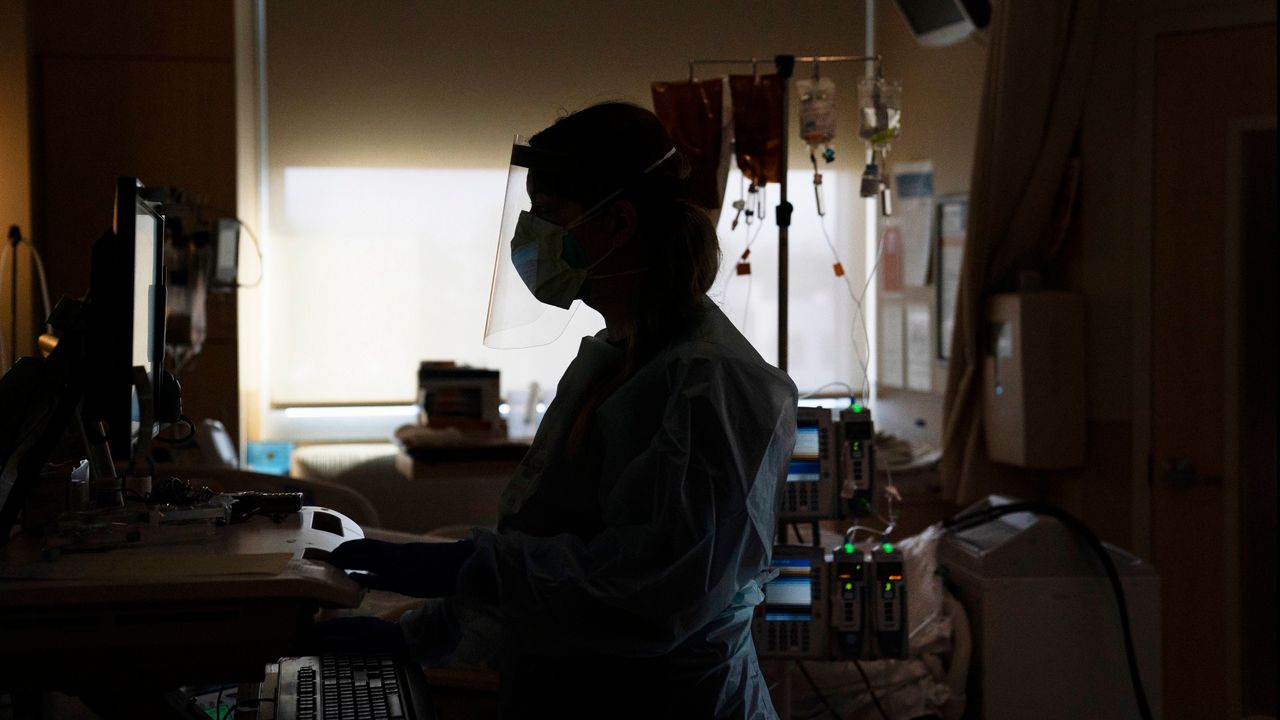MILWAUKEE (SPECTRUM NEWS) — Across the world, scientists are racing to craft an effective coronavirus vaccine, with more than 160 candidates in various stages of development. Researchers in the U.K. and the U.S. recently published promising results, and government officials have projected that a vaccine will be available by the end of the year.
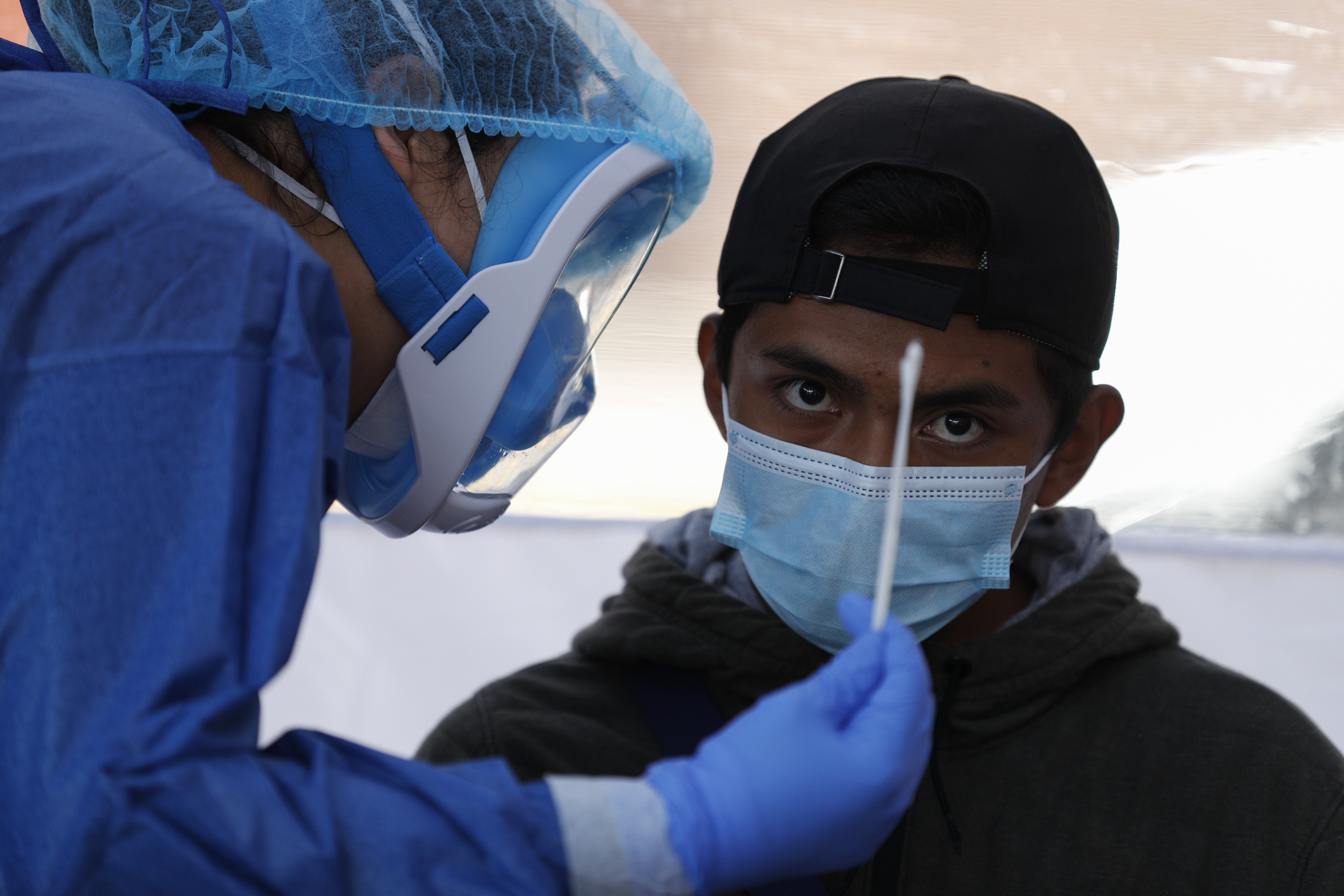
But with demand for vaccine doses spanning the entire world, the distribution will mean more time will pass before many Americans actually get their shot. So, when the first limited doses arrive, who gets dibs?
The short answer: No one really knows yet. It’s a debate that is currently getting underway in Wisconsin and just about everywhere else, bringing in public health officials, bioethicists, epidemiologists, and more to weigh in.
“It's important because of what's at stake,” says Paul Kelleher, a professor of bioethics and philosophy at UW-Madison. “And it's also important because no individual should have the sole say in how this unfolds.”
What ethical principles are behind all of this?
From a bioethics standpoint, there are a few underlying principles that could come into play in these decisions, says Kelleher, who also worked to develop guidelines for ventilator use during the pandemic.
“These principles don't always point in different directions in terms of what actual policy they support,” Kelleher notes. “They're just sort of, at the conceptual level, distinct.”
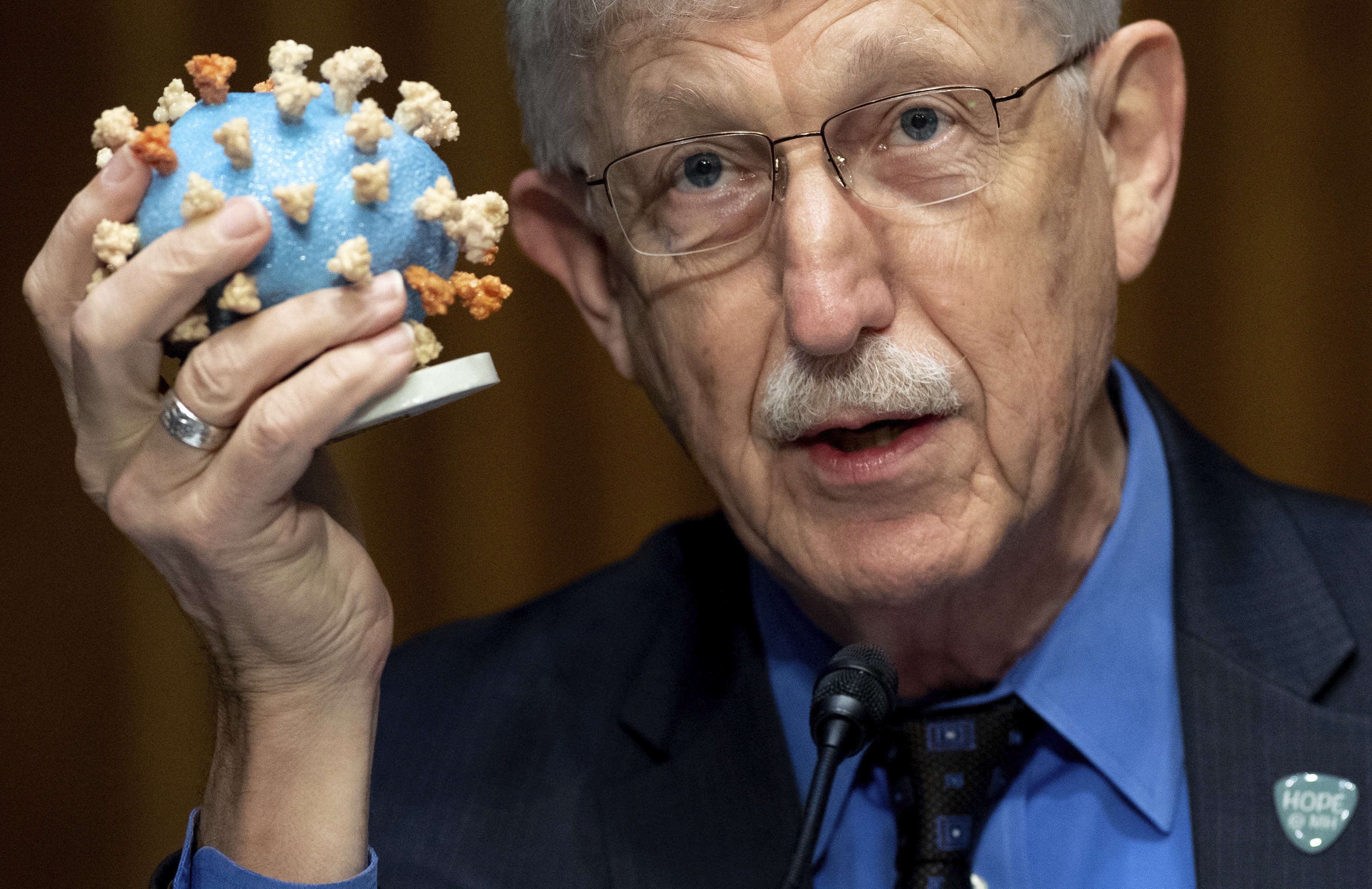
A pretty standard principle when it comes to healthcare resources is the goal of saving as many lives as possible, Kelleher says — or, when we’re thinking about a preemptive vaccine, really preventing as many deaths as possible. This utilitarian perspective aims to create the greatest benefit for the greatest number of people.
Even though this principle is a commonly used one in a public health crisis, “it's somewhat foreign or unfamiliar for many healthcare professionals, whose main goal on a day-to-day basis in normal times is to do the best for the patient that's in front of them,” Kelleher says. Sometimes tied to this is the concept that we should preserve those who are most essential to keeping society — and especially health infrastructure — running, because that will in turn keep more people safe.
Another idea in bioethics is the “life cycle” or “fair innings” principle, which argues that everyone should have an equal chance to live through life’s various stages, Kelleher adds. In the case of a pandemic, this would mean we should prioritize protecting young people over elderly people who have already had the chance to move through these stages.
Complicating questions abound: Should we focus on the people who are more likely to recover — like doctors in Italy, who were told to help those with the “greatest life expectancy” as hospitals were overrun and resources spread thin? Or is it our moral responsibility to protect the most vulnerable, following the principle of beneficence and the need to do good for others?
There’s also the argument of seeking out justice by prioritizing resources for those who have been treated unfairly in the past. Kelleher points out that throughout history, society has pushed some people into “social and environmental conditions that are hazardous to health,” making them more vulnerable in a health crisis like this one.
None of these questions have easy answers — but they’re likely to come into play as officials work out the priority lists that will have real-life consequences on people across the globe.
“We're talking about ethics here and, you know, you can't stub your toe on the right answer. You can't take a telescope out and look at it,” Kelleher says. “There's only so much authority that any given person can say they have with respect to these issues.”
Which groups are being considered for the priority list?
The eventual goal of a vaccination program would be to protect an entire population through herd immunity, Kelleher points out. But because there’s little chance that we will have enough doses available to get to this level right away — that’d require about 70% of the population to be immune, scientists estimate — the decisions come down to particular groups.
So far, there’s only one group that seems to be pretty much a given for priority vaccine access: healthcare workers. As Kelleher says, this is “not to say that healthcare workers are better people, or have more social worth,” but keeping them healthy helps save other lives.
The World Health Organization, which has already published its own vaccine guidelines, places “healthcare system workers” at the top of its list, which it says will help achieve the goal of reducing overall mortality.
Beyond healthcare workers, this line of thinking could extend to other people whose jobs are important to the community, says Jonathan Temte, an associate dean at the UW-Madison School of Medicine and Public Health.
“We look at: Are there certain critical individuals or professions in the population that, if they are disabled, can have incredibly negative consequences?” says Temte, who is a member of Wisconsin’s State Disaster Medical Advisory Committee.
Anyone from firefighters and teachers to grocery store employees and, here in Wisconsin, snowplow drivers could get priority based on their line of work, Temte says.
There’s less clarity about the elderly, immunocompromised, and other vulnerable groups. Temte says experts are certainly considering those who are high-risk for a negative outcome based on age or pre-existing conditions. But, as some scientists have pointed out, the elderly people who are most at risk from COVID-19 are also less likely to develop a strong immune response from a vaccine, making it harder to get to eventual herd immunity levels.
As COVID-19 continues to tear through minority communities at disproportionate rates, some have also argued that these groups should get higher priority for a vaccine. In Wisconsin, Black and Latino residents have seen particularly high levels of coronavirus hospitalizations and deaths, Temte points out. The idea of including race and ethnicity in the priority list already stirred up controversy among CDC committee members.
The participants who volunteered for fast-tracked vaccine trials could also be considered for the priority list, as Francis Collins, the director of the National Institutes of Health, brought up at a Friday meeting on vaccine distribution. Plus, geography could come into play as COVID-19 hotspots continue to shift in the U.S.
“This is going to be controversial. Not everybody's going to like the answer,” Collins said. “There will be many people who feel that they should have been at the top of the list, and not everybody can be.”
How will the prioritization process work?
With all of these complicated questions, Kelleher says the best-case scenario for crafting a final plan will involve lots of discussion with diverse groups of experts and stakeholders. But even as these debates ramp up across the U.S., it remains unclear who exactly will get to decide on the country’s priorities.
Usually, the CDC’s Advisory Committee on Immunization Practices (ACIP) helps advise officials on the best plan for vaccine distribution, taking into account dosage, timing, and any safety precautions, says Temte, who is part of the ACIP’s coronavirus working group. In the case of a pandemic, when quantities of a vaccine are limited, this committee can create a prioritization plan to point out who should be “first in line” for immunization, he says.
Last week, though, the National Academies of Science, Engineering, and Medicine named their own expert panel, creating some confusion about whose recommendations would guide the government’s decisions.
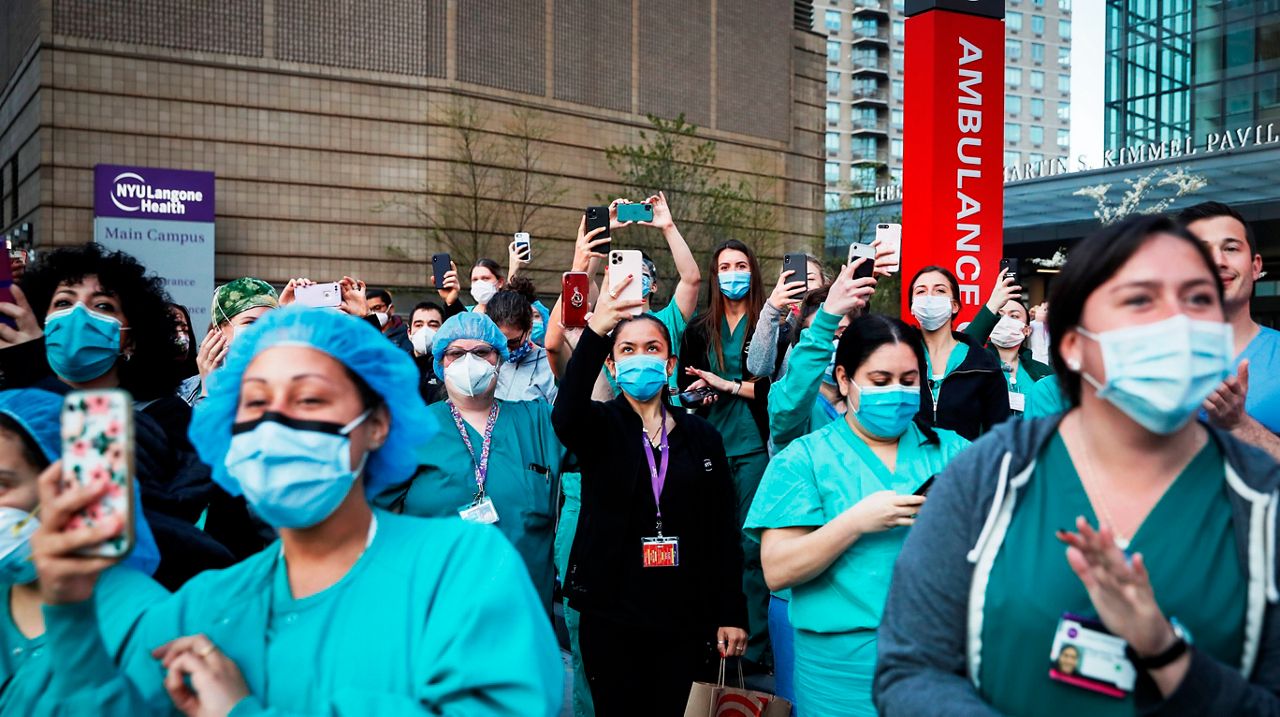
At the first public meeting of the National Academies panel on Friday, national health officials said they thought it would be beneficial to involve both of these groups in the discussion. Collins said the National Academies committee should provide a high-level look at the basic principles for setting priorities, which could help inform the ACIP’s work.
Across these conversations, CDC director Robert Redfield emphasized the importance of making sure the public sees an “equitable, fair, and transparent” process.
“While this virus hasn't been equitable as it has impacted the populations, communities, and ethnic groups across our nation, we must ensure that our response to it is,” Redfield said.
In any case, some of the responsibility will likely fall to the states to interpret the national guidelines, Temte says, with the federal government buying up vaccine doses and handing them over to the states for distribution. Under Operation Warp Speed — the Trump administration’s effort to fast-track vaccine development and delivery — the government plans to pay companies for their vaccine doses and provide them to Americans free of charge.
Temte says he would expect the federal government to give states a certain allocation of the vaccine doses tied to their population size. State officials would then have some power to interpret the national guidelines for their residents.
Though Temte says it could be helpful for states to have some authority to adapt the priority lists to fit their populations’ needs, Kelleher says he’s worried that this approach could create disparities across the country.
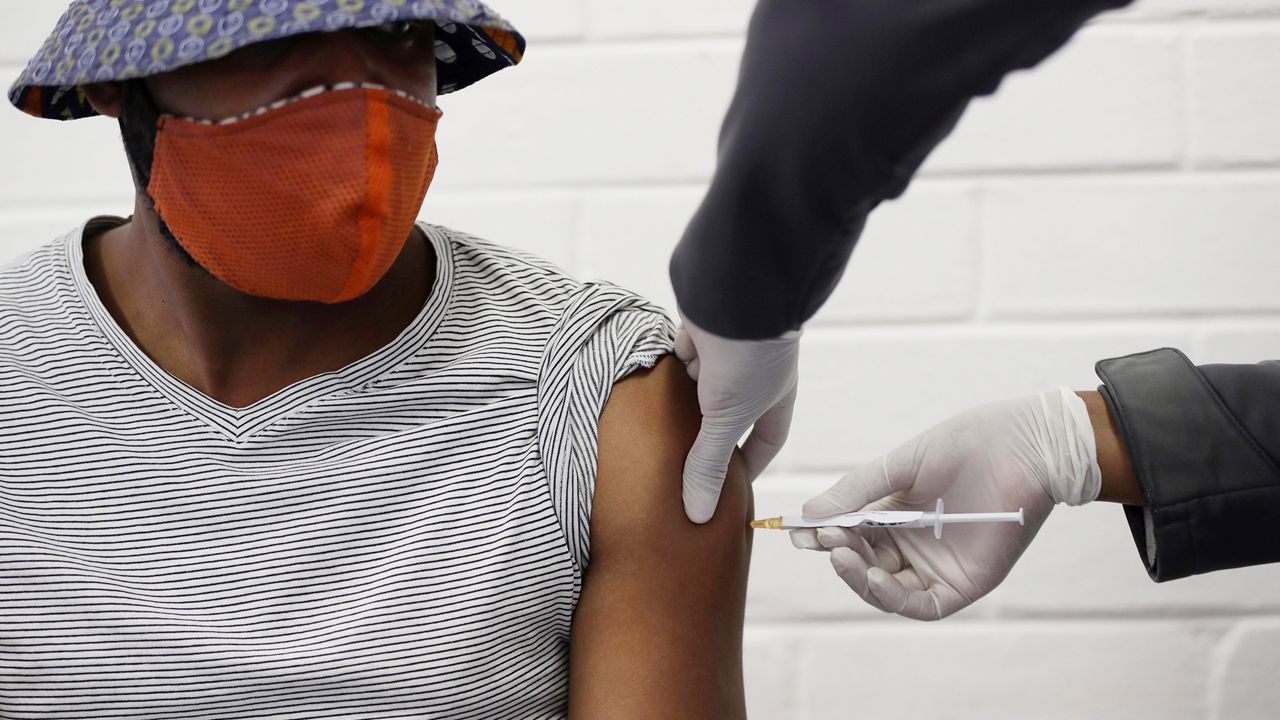
“We're going to have 50 different responses to the question of how to allocate a scarce vaccine if we end up with one,” Kelleher says.
In Wisconsin, the State Disaster Medical Advisory Committee — which has previously discussed guidelines on ventilator usage and school reopening — recently decided to include vaccine distribution as one of its focuses.
A charge letter from Andrea Palm, secretary-designee of the Wisconsin DHS, requests that the group create ethical guidelines to help health officials distribute vaccines and treatments for COVID-19 as they become available. The recommendations should incorporate diverse perspectives and public feedback, and should be “fully protective of persons with disabilities or other historically marginalized groups,” the letter says.
These discussions are still in early stages, Temte emphasizes. Elizabeth Goodsitt, a communication specialist with the State Department of Health Services, says in an email that “DHS is eagerly anticipating the development of a vaccine for COVID-19,” but that it’s too soon to speculate on a particular prioritization plan.
At the Friday meeting, Victor Dzau, the president of the National Academy of Medicine, said their committee plans to meet every week moving forward (“So much for your summer, guys,” he joked). They should have their draft recommendations by late August, with a final proposal by the end of September after taking public comments, Dzau said. On the ACIP side, Temte projects the working group should have a pretty thorough prioritization document by October.
Even once all these difficult questions are sorted out, Temte says the biggest challenge he sees is that a large number of people might refuse to get the vaccine. A nationwide survey from May found that only half of Americans said they planned to get vaccinated if a shot became available, while 20% said they wouldn’t get vaccinated and 30% were unsure.
“For this vaccine to be effective, and for us to return to some semblance of normality, we have to be able to utilize this vaccine in a vast number of people,” Temte says. “Every person who refuses based on misinformation is allowing the pandemic to continue.”“For this vaccine to be effective, and for us to return to some semblance of normality, we have to be able to utilize this vaccine in a vast number of people,” Temte says. “Every person who refuses based on misinformation is allowing the pandemic to continue.”
In any case, Kelleher says he takes seriously the fact that “absolutely everyone’s lives are at stake.” Unlike other, more hypothetical discussions in bioethics, Kelleher says, this conversation will have quick and concrete consequences.
“Right now, we're in the middle of it,” Kelleher says. “And we don't have that same luxury of kicking the can down the road.”





